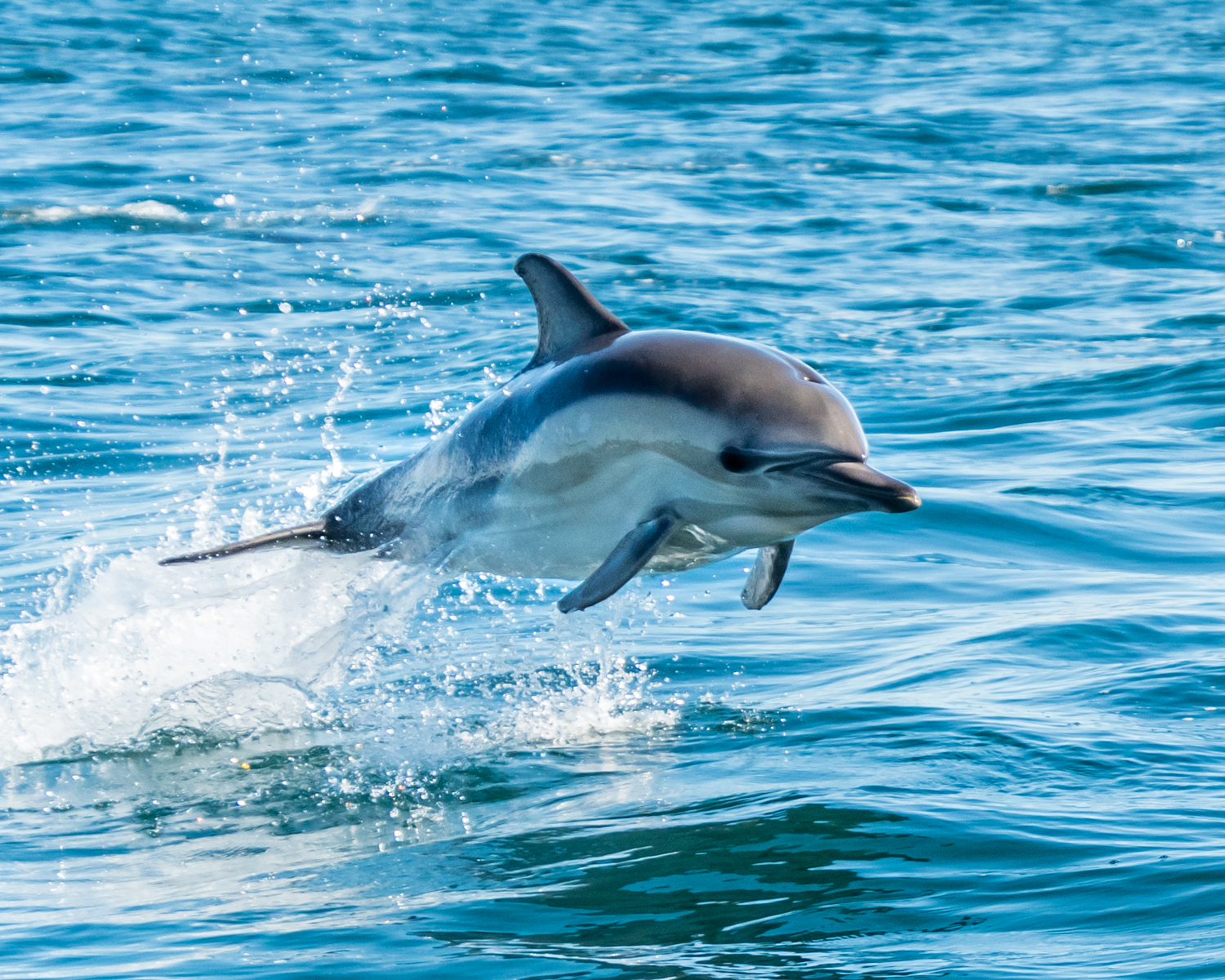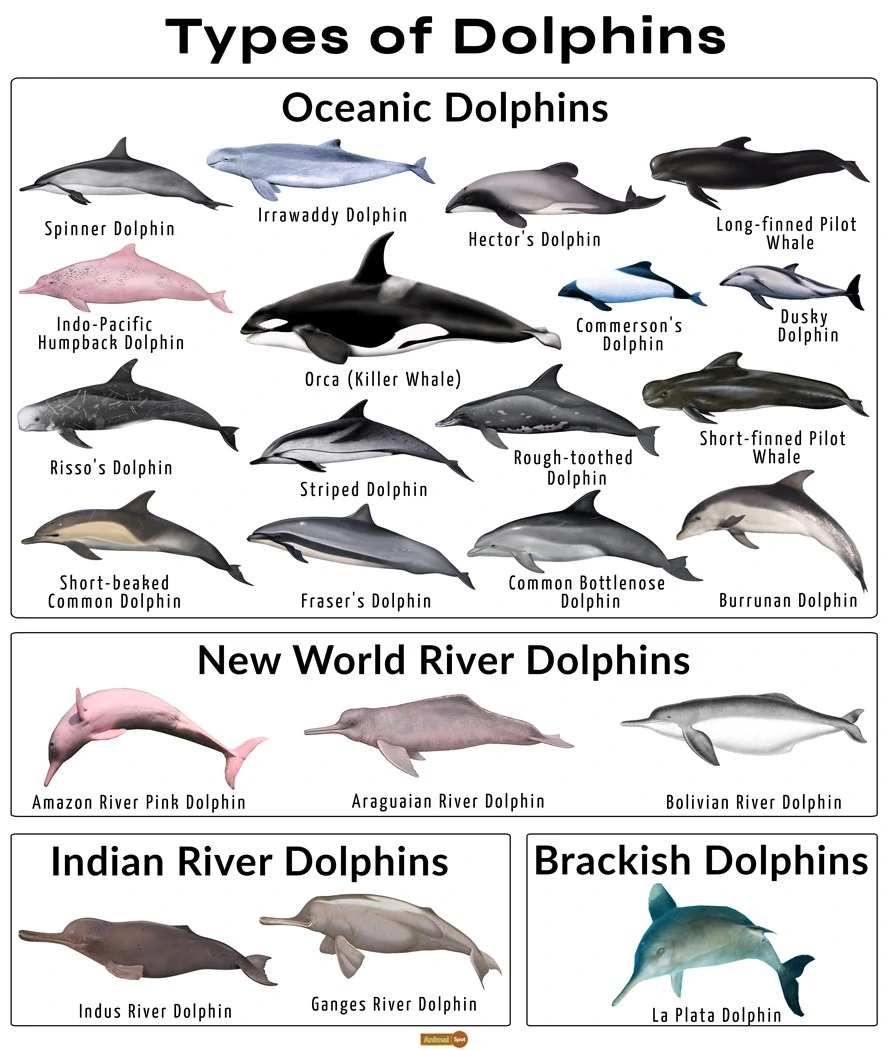Fantastic Dolphin Facts That Explain Their Remarkable Navigating Skills
Fantastic Dolphin Facts That Explain Their Remarkable Navigating Skills
Blog Article
Dive Into the Sea: Fascinating Dolphin Realities for Ocean Lovers
The world of dolphins presents a remarkable crossway of intelligence, social habits, and ecological importance. With about 37 types, these aquatic mammals show a variety of amazing qualities that not only mesmerize sea fanatics but also emphasize their crucial role in marine ecosystems. From their complicated communication methods to their outstanding analytic capacities, dolphins challenge our understanding of animal intelligence. The pressing requirement for conservation efforts to safeguard these creatures and their habitats raises important questions about our obligation towards the ocean's residents. What implications do these factors hold for our interactions with these amazing beings?
Dolphin Variety Diversity
Variety is a characteristic of the dolphin family members, encompassing a large range of types that display distinct physical qualities, actions, and environments. The family Delphinidae, commonly referred to as oceanic dolphins, makes up approximately 37 species, each adjusted to specific ecological specific niches. As an example, the bottlenose dolphin (Tursiops truncatus) is renowned for its knowledge and versatility, growing in both open and seaside sea atmospheres.
On the other hand, the orca (Orcinus orca), typically referred to as the killer whale, is the largest participant of the dolphin household and is defined by its striking black-and-white pigmentation. Orcas demonstrate complicated social frameworks and searching strategies, showcasing the behavior variety within the family. Other types, such as the spinner dolphin (Stenella longirostris), are kept in mind for their acrobatic display screens and preference for warmer waters, highlighting the adaptability of dolphins to different aquatic environments.
In addition, river dolphins, including the pink river dolphin (Inia geoffrensis), populate freshwater atmospheres, further illustrating the varied habitats that dolphins inhabit. Dolphin Facts. This extraordinary variety not only improves aquatic ecological communities but also highlights the value of conservation initiatives to shield these impressive creatures and their settings
Social Habits and Communication
The detailed social actions and communication methods of dolphins are important elements of their existence, promoting group cohesion and enhancing survival. These very smart marine animals show complicated social structures, often forming husks that can vary from a few individuals to over a hundred. Within these groups, dolphins involve in behaviors such as participating hunting, social play, and mutual defense, which cultivate solid bonds among members.
Dolphins make use of an innovative variety of vocalizations, consisting of clicks, whistles, and body movement, to convey information and express feelings. Their signature whistles serve as unique identifiers, akin to names, allowing individuals to call out to one an additional. This vocal communication is complemented by non-verbal signals, such as leaping, slapping the water, and integrated swimming, which better improves their interactions.

One-of-a-kind Feeding Habits
Distinct feeding practices identify dolphins, showcasing their flexibility and intelligence in numerous marine environments. These marine mammals are recognized for their varied diet plans, which mainly consist of fish, squid, and crustaceans. Their hunting strategies can vary significantly, often customized to the specific target and ecological problems.
One notable technique is participating searching, where dolphins function in groups to herd institutions of fish into tight developments, making it simpler for people to catch their meal. This social habits not only boosts their feeding efficiency however additionally strengthens social bonds within the husk. Furthermore, dolphins have actually been observed using a method called "fish-whacking," where they utilize their tails to click reference stun or disorient fish, helping with much easier capture.
One more fascinating feeding practice is echolocation, which permits dolphins to discover target also in murky waters. Overall, the one-of-a-kind feeding habits of dolphins highlight their duty as skilled killers within the marine ecological community, showing both knowledge and resourcefulness.
Knowledge and Problem Fixing
Their knowledge is apparent in their analytic skills, social communications, and ability for discovering. Research study has actually shown that dolphins can utilize tools, such as utilizing aquatic sponges to protect their rostrums while foraging on the seafloor.
Moreover, dolphins show innovative communication skills, utilizing a complex system of clicks, whistles, and body movement. Dolphin Facts. This interaction is crucial for coordinating group activities, such as searching and socializing, highlighting their capacity to work jointly in the direction of an usual goal. Their capability to comprehend abstract principles, including self-recognition in mirrors, better stresses their cognitive refinement
In controlled studies, dolphins have shown an ability to fix problems and do jobs that call for both memory and essential reasoning. These communications indicate not only knowledge however likewise a willingness to involve with their setting in unique means. On the whole, the cognitive expertise of dolphins positions them amongst the most intelligent species in visit here the world, promoting a much deeper gratitude for their duty in aquatic communities.
Preservation and Environmental Impact
Conservation initiatives focused on protecting marine ecological communities are vital for preserving dolphin populaces and their habitats. Dolphins are very delicate to environmental changes, and their survival is elaborately linked to the health and wellness of nautical ecosystems. Overfishing, air pollution, and climate modification pose substantial threats to both dolphins and their environments.
Overfishing disrupts the food web, bring about a decline in prey species necessary for dolphin survival. Pollutants such as chemicals and plastics gather in marine environments, threatening dolphins with ingestion and bioaccumulation. Raised water temperatures and ocean acidification, effects of environment change, further endanger the delicate equilibrium of aquatic ecosystems, influencing dolphin reproduction and migratory patterns.
By focusing on conservation efforts, we can ensure that future generations appreciate the appeal and vigor of dolphins and the seas they inhabit. Safeguarding marine ecological communities is not just regarding conserving dolphins; it is regarding protecting the intricate internet of life that sustains us all.
Final Thought
Dolphins exemplify the complexity and splendor of marine life with their diverse types, intricate social frameworks, and advanced cognitive abilities. Their distinct feeding practices and communication techniques better illustrate their adaptability and intelligence. As crucial elements of marine environments, dolphins emphasize the requirement of recurring conservation efforts to guard their environments. Protecting these impressive animals is necessary not just for their survival but also for keeping the health my sources and balance of sea settings internationally.
Various other types, such as the spinner dolphin (Stenella longirostris), are noted for their acrobatic screens and choice for warmer waters, highlighting the flexibility of dolphins to different marine communities.
On the whole, the one-of-a-kind feeding routines of dolphins highlight their function as competent killers within the aquatic environment, demonstrating both knowledge and resourcefulness.
In general, the cognitive prowess of dolphins places them among the most smart varieties on the world, cultivating a deeper recognition for their duty in marine environments.

Report this page